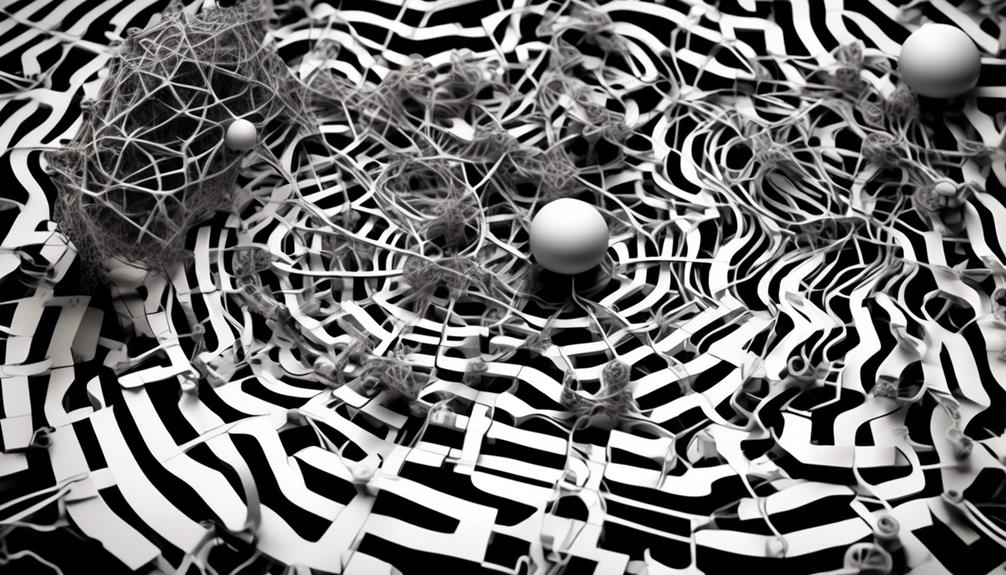Exploring the complex terrain of mental health problems reveals a compelling discussion about the relationship between Rejection Sensitive Dysphoria (RSD) and Borderline Personality Disorder (BPD). Although both conditions exhibit intense emotional reactions, it is crucial to delve deeper into the unique features and quirks of each to understand the subtle differences between them.
Understanding the distinct emotional triggers, relationship patterns, and challenges associated with each can shed light on how individuals experience and cope with these conditions. The complexities of RSD versus BPD offer a compelling lens through which to view the diverse manifestations of emotional dysregulation in clinical settings.
Key Takeaways
- RSD focuses on rejection, BPD on abandonment.
- RSD seeks validation, BPD shows idealization patterns.
- Understanding self-image issues crucial for differentiating RSD and BPD.
- Tailored treatment for rejection sensitivity and BPD symptoms is essential.
Key Differences in Emotional Triggers
In exploring the key differences in emotional triggers between RSD and BPD, it becomes evident that these conditions manifest distinct responses to specific stimuli. Rejection plays a significant role in triggering emotional responses in individuals with both Borderline Personality Disorder (BPD) and Rejection Sensitive Dysphoria (RSD). However, the nature of this trigger differs between the two conditions.
Individuals with RSD primarily react strongly to perceived rejection or criticism, leading to intense emotional responses. On the other hand, those with BPD are more affected by fears of abandonment and struggles with identity stability.
The sensitivity to rejection in RSD can often be traced back to childhood experiences, where repeated rejections may have heightened the individual's emotional responses. This heightened sensitivity can manifest in intense fear of rejection and a constant need for validation and approval.
In contrast, individuals with BPD may have experienced significant disruptions in their sense of self, leading to difficulties in maintaining stable relationships and a tendency towards idealization and devaluation patterns. Understanding these distinct emotional triggers is crucial in accurately identifying and addressing these mental health conditions.
Contrasting Relationship Patterns

Upon examining the contrasting relationship patterns between individuals with RSD and BPD, it becomes apparent that these conditions manifest distinct behaviors and dynamics within interpersonal connections.
- RSD tends to lead to avoidance or clinginess in relationships, while BPD is characterized by unstable and intense relationships.
- Individuals with RSD may exhibit compliant or avoidant behaviors in response to perceived rejection, unlike the idealization and devaluation patterns seen in BPD.
- RSD primarily focuses on fear of rejection, contrasting with BPD's core fear of abandonment and identity disturbances.
- In RSD, individuals often seek validation to alleviate their fear of rejection, whereas those with BPD struggle with self-identity stability.
These contrasting relationship patterns showcase how rejection sensitivity and fear of rejection play a significant role in shaping the behaviors of individuals with RSD, while individuals with BPD grapple with abandonment fears and identity instability. The compliance and avoidance tendencies in RSD differ from the unstable and tumultuous relationships marked by idealization and devaluation often seen in BPD, highlighting the unique challenges each condition presents in forming and maintaining interpersonal connections.
Variances in Self-Image and Identity
Navigating the complexities of self-image and identity variance in individuals with RSD and BPD reveals distinct challenges inherent to each condition. Rejection sensitivity plays a pivotal role in shaping behaviors in those with RSD, driving them towards approval-seeking tendencies.
On the other hand, individuals with BPD face struggles with self-identity stability, leading to identity disturbances and fear of abandonment. While RSD individuals may exhibit either compliant or avoidant behavior in relationships, those with BPD tend to display idealization and devaluation patterns, affecting their relationship dynamics significantly.
The unstable self-identity experienced by individuals with BPD contrasts with the hyperawareness of rejection scenarios common in those with RSD. Understanding the nuances of self-image issues and identity disturbances in both conditions is crucial for differentiating between RSD and BPD, highlighting the need for tailored interventions and support strategies.
Overlapping Symptoms and Challenges

Exploring the shared symptoms and challenges between RSD and BPD sheds light on the complexities of emotional dysregulation and interpersonal struggles faced by individuals with these conditions.
- Both RSD and BPD encompass rejection sensitivity, making individuals highly attuned to signs of potential abandonment, leading to intense emotional reactions.
- Emotional sensitivity is a common thread in both conditions, manifesting in heightened responses to perceived slights or criticism, often triggering mood swings and impulsive behaviors.
- Difficulties in emotional regulation are prevalent in both RSD and BPD, amplifying the challenges individuals face in managing their emotions effectively.
- Interpersonal difficulties are a significant aspect of both conditions, impacting how individuals navigate social interactions, often feeling misunderstood or isolated due to their unique emotional responses.
The overlap in symptoms between RSD and BPD not only complicates clinical diagnosis but also necessitates tailored treatment approaches to address the distinct challenges each condition presents, underscoring the importance of a nuanced understanding of these complex mental health issues.
Co-Occurrence of RSD and BPD
The intersection of Rejection Sensitive Dysphoria (RSD) and Borderline Personality Disorder (BPD) in individuals with heightened emotional sensitivity poses significant challenges in relationships, emotional regulation, and self-identity stability. When RSD and BPD co-occur, individuals may struggle with intense emotional responses to perceived rejection, leading to difficulties in maintaining stable and fulfilling relationships.
The shared symptoms of rejection sensitivity in both disorders can complicate accurate diagnosis and effective treatment planning. Addressing rejection sensitivity becomes paramount in therapeutic interventions for individuals with co-occurring RSD and BPD to enhance treatment outcomes and alleviate symptom severity.
Tailored treatment approaches that target both rejection sensitivity and BPD symptoms are essential for improving emotional regulation and self-identity stability. By acknowledging the co-occurrence of RSD and BPD and incorporating strategies to manage rejection sensitivity, clinicians can better support individuals in their journey towards improved emotional well-being and overall mental health.
Frequently Asked Questions
What Is the Difference Between BPD and Rejection Sensitivity Disorder?
When comparing Borderline Personality Disorder (BPD) and Rejection Sensitivity Disorder (RSD), it's crucial to understand their distinct features. BPD revolves around a fear of abandonment, leading to unstable moods and relationships.
On the other hand, RSD focuses on the fear of rejection, triggering intense responses to criticism.
While both disorders share symptoms like emotional sensitivity and interpersonal challenges, they differ in their primary fears and relationship patterns.
Understanding these differences is key to effective support and management.
How Does RSD Really Actually Feel?
RSD can feel like an intense fear of rejection, criticism, or failure. It may lead to overwhelming emotional reactions such as anger, sadness, or guilt.
The constant need for external validation and deep sense of shame can be distressing. People with RSD often exhibit avoidance behaviors or people-pleasing tendencies to cope.
This experience can cause significant emotional turmoil and challenges in daily functioning and relationships.
Can You Have Emotional Dysregulation but Not Bpd?
Yes, it's possible to experience emotional dysregulation without having BPD. Various mental health conditions, such as ADHD, PTSD, and bipolar disorder, can also manifest emotional dysregulation. This difficulty in managing emotions can be a standalone symptom in different disorders.
Understanding the broader context of symptoms and diagnostic criteria is essential to differentiate between emotional dysregulation and BPD. It's crucial to consider a comprehensive assessment for an accurate diagnosis.
What Does Rejection Sensitivity Look Like?
Rejection sensitivity manifests as an intense fear of rejection, criticism, or failure, triggering strong emotional reactions. Individuals may avoid situations that could lead to rejection or seek constant reassurance to ease their fears. This heightened sensitivity can cause emotional outbursts or people-pleasing behaviors in response to perceived rejection.
Managing rejection sensitivity is crucial as it impacts relationships, self-esteem, and overall well-being, making it a significant challenge in daily life that requires understanding and support.
Conclusion
In conclusion, while RSD and BPD may seem like two sides of the same coin, their differences are what make them uniquely challenging for individuals to navigate.
It's ironic how fear of rejection and fear of abandonment can lead to similar struggles, yet require tailored approaches for effective management.
By understanding these distinctions, we can better support those facing these emotional hurdles and work towards fostering healthier relationships and self-perceptions.









